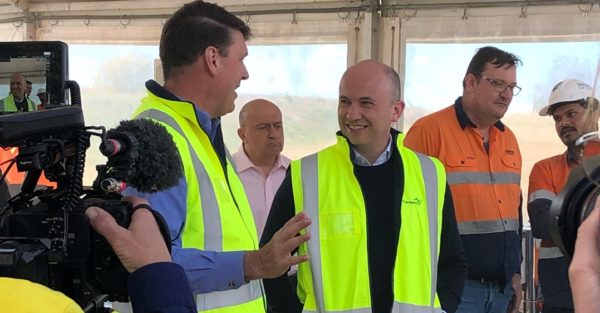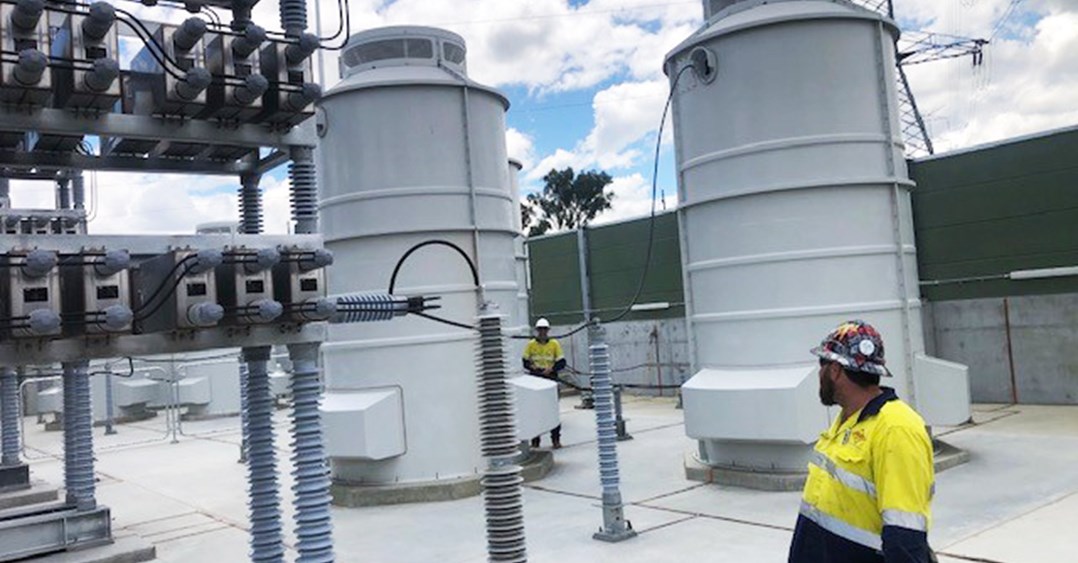New South Wales (NSW) transmission network owner Transgrid said the successful completion of a multi-million-dollar upgrade to the Queensland-NSW Interconnector (QNI), which allows power to flow in both directions, will enable improved load sharing between the states and bring additional energy, including renewable energy, onto the grid.
Transgrid said the QNI project, identified as a priority by the Australian Energy Market Operator in its Integrated Systems Plan (ISP) which outlines the path towards a net-zero grid amidst the retirement of coal-fired power, will allow an additional 460 MW of additional energy to be transferred into Queensland and 190 MW more into NSW and the Australian Capital Territory (ACT) when required.
Transgrid chief executive officer Brett Redman said on Thursday the QNI upgrade is the first ISP project the network owner has delivered and “is a critical piece of infrastructure to support Australia’s energy transition” and will “make a significant difference to the National Electricity Market”.
“Transgrid is leaning into the acceleration of the energy transition by building the major projects which will enable the integration of renewables, increase competition among generators, drive down electricity prices and support the decarbonisation of Australia’s economy,” he said.
The QNI project involved the upgrading of the existing 330 kV transmission lines between the Liddell power station and the Tamworth substation. Activities included the replacement of existing pole structures with taller structures to enable the transmission of more energy as new generation comes online.

Image: Transgrid
New technology was also installed at the Armidale, Dumaresq, Muswellbrook and Tamworth substations to strengthen the transmission network including new capacitor banks, Static Volt Amp Reactive compensators (SVC), transformers and 330 kV switch bays. Transgrid said the capacitor banks will provide additional reactive power, while the SVC regulates the reactive power on the grid to keep it stable.
NSW Energy Minister Matt Kean, whose government joined with the federal government to contribute $102 million towards the QNI upgrade, said the project is an important step in the state’s transition to cleaner, greener energy.
“We identified the QNI project as a priority in the NSW Transmission Infrastructure Strategy because it supports our vision to provide affordable and reliable energy for NSW households,” he said.
“The interconnector upgrades will also support the development of renewable generation in new energy zones across both states, as coal-fired generators retire and we transition towards a grid predominately supplied by renewable energy sources.”
The QNI project is one of a number of major transmission upgrade projects that Transgrid is either leading or contributing to, including the soon-to-be-completed Victoria NSW Interconnector (VNI), which is expected to increase transfer capacity into NSW from Victoria by 170 MW at times of high demand.
Transgrid is also building the 700km NSW section of EnergyConnect, from Wagga Wagga to the South Australian border. The 900km electricity interconnector will link power grids across NSW, South Australia (SA) and Victoria, unlocking gigawatts of new wind, solar PV and storage. South Australia’s transmission network owner ElectraNet is constructing the SA section of the new interconnector from the border to Robertstown.
Transgrid is also developing the HumeLink and VNI West Kerang transmission projects, which together with EnergyConnect will reinforce the southern grid and support the energy transition and cater for forecast increases in energy demand.
This content is protected by copyright and may not be reused. If you want to cooperate with us and would like to reuse some of our content, please contact: editors@pv-magazine.com.









By submitting this form you agree to pv magazine using your data for the purposes of publishing your comment.
Your personal data will only be disclosed or otherwise transmitted to third parties for the purposes of spam filtering or if this is necessary for technical maintenance of the website. Any other transfer to third parties will not take place unless this is justified on the basis of applicable data protection regulations or if pv magazine is legally obliged to do so.
You may revoke this consent at any time with effect for the future, in which case your personal data will be deleted immediately. Otherwise, your data will be deleted if pv magazine has processed your request or the purpose of data storage is fulfilled.
Further information on data privacy can be found in our Data Protection Policy.